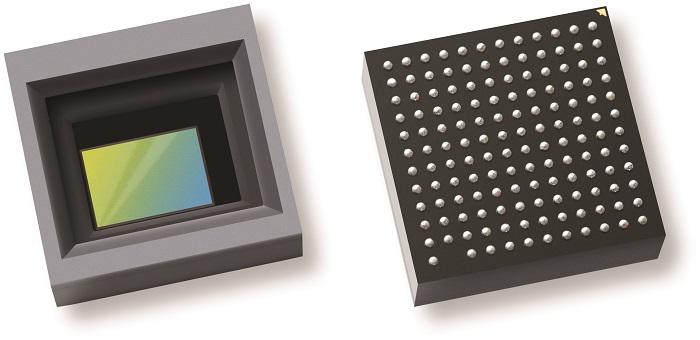By Gina Roos, editor-in-chief
OmniVision Technologies, Inc. has released its high-definition (HD) automotive camera module reference design, developed in partnership with Leopard Imaging. The single-board design includes OmniVision’s OX01B40 image sensor and image signal processor (ISP) system-in-package (SiP), as well as Texas Instruments' DS90UB933-Q1 or DS90UB935-Q1 serializer chip and TPS65000-Q1 power management integrated circuit (PMIC). The reference design helps developers design automotive viewing cameras particularly for rearview cameras and surround-view cameras.
All four components are AEC-Q100 Grade 2-qualified and operate over a temperature range of –40°C to 105°C. OmniVision said that the reference design can be integrated directly into vehicles as a low-cost solution with a fast time to market or it can be used as a starter kit for Tier-1 suppliers and OEMs that want to create their own camera modules.
“This is the first automotive camera module to incorporate all of its components on a single printed circuit board (PCB),” according to OmniVision. “Existing modules stack at least two PCBs for the image sensor and ISP, respectively, and usually a third for the power ICs.”

Key features of the OX01B40 SiP:
- Built on OmniVision’s 2.8-micron OmniBSI-2 Deep Well pixel technology
- Combines a 1,392 × 976-resolution color CMOS image sensor and an ISP
- Supports streaming video of up to 60 frames per second (fps)
- Consumes less than 400 mW of power
The “OX01B40 delivers best-in-class low-light sensitivity and 120-dB high dynamic range (HDR) performance for excellent contrast and for resilience to rapidly changing lighting conditions ranging from darkness to bright sunlight,” said OmniVision.
On the power side, TI’s TPS65000-Q1 single-chip PMIC combines low-dropout regulators with a step-down converter. The chip can operate in forced PWM mode or auto PWM-PFM mode, depending on load, to maximize efficiency, said the company.
Designers get a choice of either parallel CMOS (DS90UB933-Q1) or MIPI CSI-2 (DS90UB935-Q1) FPD-Link serializers, which support communication with high-speed image sensors. Both options target high-resolution, compact camera module designs with 1-MP cameras streaming at up to 60 fps. In addition, the DS90UB935-Q1 eliminates the need for an oscillator in the camera module, said OmniVision, saving space and cost.
The reference design is available now from Leopard Imaging. Contact the company or visit https://leopardimaging.com/product/LI-X1B4-TI933/.
Partnered Content: Learn why signal chain expertise is mission-critical for the DOD
Advertisement
Learn more about Electronic Products Magazine





